This strongly scented herb is considered a weed by many gardeners, but is in fact a useful ally in the organic garden. There are 2 varieties and we’ll look at both in this post. By companion planting chamomile, you will reap many benefits, and attract beneficial insects to your garden.
What Are The 2 Common Types Of Chamomile?
The 2 most common types of chamomile are German chamomile (matricaria chamomilla) and Roman chamomile (anthemis nobilis). Both prefer full sun or partial shade, and both are used for teas and ointments. There are certain differences as we will see, and it’s worth considering these before sowing any seeds.
Roman Chamomile
This is the one considered to be a weed, it is a low growing plant and will grow under any conditions. Hence its weed like reputation.
German Chamomile
This plant is much taller, and can grow up to 3 foot (90 cms) in height. It produces small daisy like flowers with white petals surrounding a raised yellow middle. German chamomile is also known as wild chamomile, and has a strong, aromatic smell.
For the rest of this post we are only looking at German or Wild Chamomile.
Companion Planting Chamomile (Or What To Grow With Chamomile)
Chamomile has the nick name of the Physicians Plant, because it will revive sick plants if planted near by. German or Wild Chamomile makes a great companion plant for the following plants.
Cabbages and Chamomile
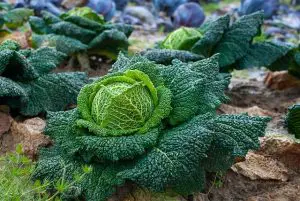
Companion planting chamomile with cabbage will improve the growth, vigour and flavour of the cabbages.
Cucumbers and Chamomile

By companion planting chamomile with cucumbers you will improve the flavour, growth and vigour of your cucumber plants.
Onions and Chamomile
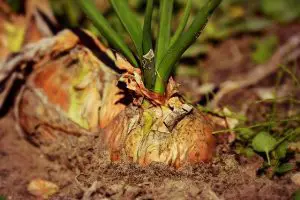
Onions will also benefit from improved health and growth if companion planted with chamomile.
Potatoes and Chamomile

Chamomile is known to deter Colorado beetles which are a serious pest to potato growers.
Carrots and Chamomile

Growing chamomile near carrots will greatly reduce the risk of carrot fly damage. It’s not the fly that does the damage it’s the grub that hatches from eggs laid by the carrot fly. The strong scent from chamomile disguises the carrots from this pest.
Tomatoes and Chamomile

Companion planting chamomile with tomatoes, improves the health and flavour of your tomatoes, and deter pests too.
Squash and Chamomile
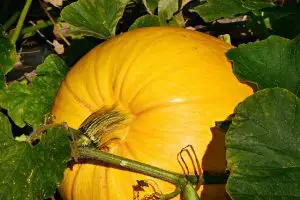
Squash suffer from beetles that actually bore inside the plant and as a result the squash plant dies. Companion planting chamomile stops these beetles from discovering squash plants and keeps them free from harm. The health and flavour of the squashes is also greatly improved by growing with chamomile.
This will work for all squashes including pumpkins, all winter squash, and courgettes (zucchini).
Beans and Chamomile
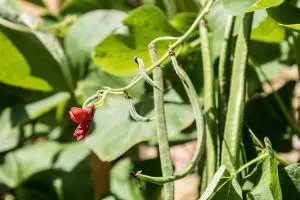
Beans are a fairly easy plant to grow, and they can be made stronger, more resilient plants by companion planting with chamomile. They will also benefit from better flavour and better growth too.
Peas and Chamomile

Like beans, peas will also benefit from growing in companion with chamomile. They will be stronger plants and have more much more vigorous growth.
Dill and Chamomile
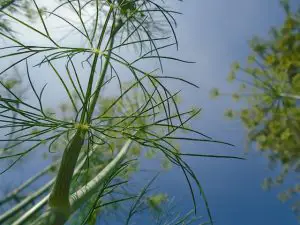
By growing chamomile in companion with dill, your dill will be healthier and produce more oil.
Mint and Chamomile

Mint is a very invasive herb and, as such, needs no help. But if you grow mint for its flavour, companion planting with chamomile will greatly improve its flavour and oil content.
What Not To Grow With Chamomile
There is absolutely no plant whatsoever that I can find that is detrimental to chamomile and vice versa. This puts chamomile into a unique place in the world of companion planting and chamomile also is considered to be a tonic for every plant in the garden.
The Benefits Of Companion Planting Chamomile
Chamomile will improve pretty much every plant in your garden and attract beneficial insects as well. Including bees, hoverflies and wasps, so you’ll be getting pollinators, and predators at the same time. It is known to accumulate calcium, potassium and sulphur from the soil, and as the plant grows it will redistribute these essential nutrients to the soil.
Chamomile Tea For Plants
I’m not talking about the herbal tea known for its calming nature. This is a very beneficial tea made from chamomile flowers and water. Simply steep chamomile flowers in cold water for 48 hours and then strain into a spray bottle.
This tea can be used to prevent seedlings from damping off and it is very effective. damping off is where seedlings suddenly die off from what looks like rot and the first you know of it is they are dead.It is caused by soil borne fungi and cold, wet conditions.
By spraying with chamomile tea you stop the fungi from attacking your seedlings and greatly reduce damping off. Try it for yourself, it really does work and you will get a much better seedling success rate. I have also had success using cinnamon to combat damping off and to find out more about cinnamon and its benefits in the garden click here.
Damping off is caused by several soil-borne fungi and fungus-like organisms including Pythium, Phytophthora, Rhizoctonia and Fusarium, which infect seedlings and cause them to ‘damp off’ or collapse and decay.
RHS
The RHS is the Royal Horticultural Society and have many useful hints and tips, you can get to their site by following this link.
The sludge left from making chamomile tea can then be added to the compost heap and this will speed up decomposition. Read on for more about making the medicinal herbal tea from chamomile.
Medicinal Chamomile Tea
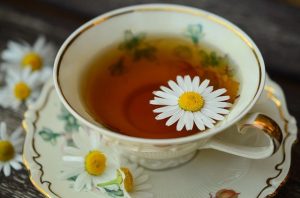
Chamomile tea promotes gastric secretions and improves the appetite. It can also be used as an internal antiseptic, as a mouth wash for mouth ulcers and even as an eye wash. To make chamomile tea follow the recipe below.
Chamomile Tea Recipe
This is a really simple recipe and both dried and fresh flowers can be used. All you need is:-
- One heaped teaspoon of chamomile flowers
- One teaspoon of honey
- Boiling water
Place the chamomile flowers in a cup fill with boiled water and steep for 3-5 minutes. Strain liquid and add honey to taste and if you prefer a slice of lemon can also be added. This tea can be consumed hot or cold.
I strongly recommend you grow the German or Wild chamomile for all of it’s beneficial and insect attracting qualities. I hope you find this post informative and helpful, if you have any questions or general comments please comment below.

